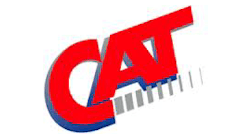CAT Carlisle Circulator Pilot Project to End April 28, 2017
The three-year Carlisle Circulator pilot project will end Friday, April 28, 2017 following the January 5, 2017 vote by the Carlisle Circulator Project Stakeholder Committee to terminate local funding as a result of low ridership in the Borough.
The pilot project, which began in April 2014, did not reach targeted levels of ridership to warrant continued local funding according to the committee, which was coordinated by Cumberland County and included local stakeholders Carlisle Borough, Middlesex Township, Dickinson College, Partnership for Better Health, Carlisle Regional Medical Center and Carlisle Events. Capital Area Transit (CAT) agreed to manage and operate the Carlisle Circulator as a three year test project to determine the viability of longer term bus service.
Capital Area Transit Board of Directors will conduct a public hearing in the Borough on March 30, 2017, prior to approving termination of the pilot project. More information will be provided publicly closer to that date.
Ridership in the Borough peaked in 2015 and leveled out at a point that did not meet the stakeholder goals agreed to before initiating the circulator test project.
A review of performance metrics over the length of the project indicated that ridership peaked by year three at 3.58 passengers per revenue vehicle hour, well below the goal of 8.45 riders per service vehicle hour called for in the pilot performance metrics.
Source: Capital Area Transit Planning Department
Operating costs per passenger climbed to $15.96 this year, again well above the year three goal of $8.26; meanwhile, as a result of low ridership, operating revenue per vehicle hour only reached $2.40, short of the goal of $3.41 revenue per operating vehicle hour.
“The pilot project was supported by an extensive marketing communications program which included wide earned media news coverage, local advertising, collateral promotions, local cross-marketing and more than 30 public outreach meetings held across the community.” Robert Philbin, CAT spokesperson, said in making the announcement.
Act 44 Performance Metrics
Established as a demonstration project under Act 44, the Carlisle Circulator pilot was funded by PennDOT and the local Cumberland County stakeholders, who established performance measures in conjunction with CAT for each of the three years of the project. The performance measures are detailed in a signed Memorandum of Understanding (MOU) between Cumberland County Commissioners and CAT.
The following charts illustrate the four established Act 44 performance metrics, comparing the goal per fiscal year against the actual performance:
Passengers per Revenue Vehicle Hour is the number of riders per hour that use a transportation vehicle during its normal operating hours.
As of December 31, 2016
Operating costs per Revenue Vehicle Hour pertains to all the expenses, such as labor, fuel and maintenance, which are related to operating a transportation vehicle in revenue service during any given hour.
As of December 31, 2016
Operating Revenue per Revenue Vehicle Hour is the amount of money collected, per hour, through passenger fares on a transportation vehicle during its normal operating hours.
As of December 31, 2016
Operating Costs per Passenger are the hourly expenses related to operating a transportation vehicle evenly distributed across the number of passengers that ride the service during the same hour of time.
As of December 31, 2016
Overall, the Carlisle Circulator had consistently met or exceeded the performance goals relating to operating costs per revenue vehicle hour; however, for the remaining measures, which are ridership related, the demonstration project has only sporadically met or exceeded the performance goals over the three-year test period.
Direct ridership (Passengers per Revenue Vehicle Hour) exceeded goals in the first and second fiscal years, but has not met the goal for the current fiscal year. In addition, due to lower than projected ridership, costs (Operating Costs per Passenger) have increased from the first and second fiscal years, and fare revenue (Operating Revenue per Revenue Vehicle Hour) has remained low throughout the demonstration period.
CAT also completed a required Title VI analysis in January to determine the impact of ending service in the Borough on low income and minority populations compared to the general population. The analysis concluded that change in service did not rise to the threshold of having either a Disproportionate Burden or Disparate Impact for the purposes of Title VI.
The Circulator termination will have no impact on the regular CAT Harrisburg to Carlisle service, nor on the Warehouse Employee service from Dauphin County to the Warehouses on Allen Road in Carlisle.
“Regular Capital Area Transit service will continue uninterrupted in Cumberland County,” Philbin emphasized.



